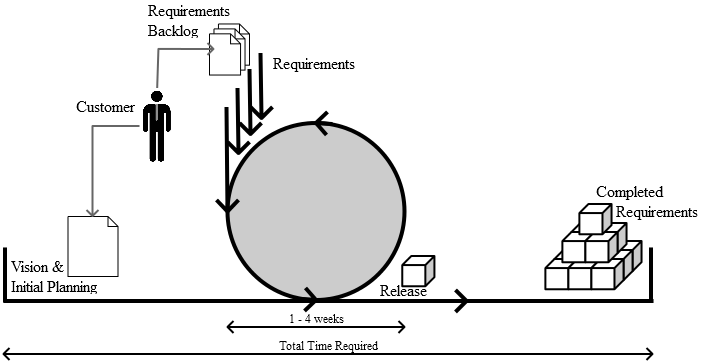Ways of Working115
Work, the Business Agility Way
or The Difference Between Continuous and Incremental Work
Evan Leybourn
March 29, 2020
or The Difference Between Continuous and Incremental Work
Evan Leybourn
March 29, 2020
Work, the business agility way, is defined as the sum of customer expectations to be delivered in an incremental or continuous manner. Depending on the context, and customer’s needs, there could be anywhere between an hour, to a decade’s work.
But first, prior to work commencing, it is important to have a common vision with your customer as well as a broad understanding of the type of work involved. This vision provides the context of the end goal, and the broad understanding helps your teams to understand what they need to deliver, in the short to medium term. This helps teams to make initial decisions relating to team structure, skills & capabilities, timeframes, and delivery mode.
This last point is important as business agility provides two delivery modes for undertaking work, based on size and complexity; these are continuous delivery and incremental delivery. Continuous delivery is best for small, discrete, self-contained, or repetitive requirements. You should be able to deliver the majority of these in a few hours to a few days of effort, in the order defined by the customers priority. Many traditional business-as-usual responsibilities fall under a continuous delivery mode; however, you can deliver many traditional projects in this manner as well. The following figure shows a simple, continuous flowchart; where the delivery cycle takes new customer requirements from the backlog, then releases the completed requirement to the customer, before proceeding to the next.

Remember agile principle #3: Deliver working software [completed requirements] frequently, from a couple of weeks, to a couple of months, with a preference to the shorter timescale.
An incremental delivery mode is required when delivering a complex group of requirements where you expect a large investment in time to complete, usually a few weeks to a few months. Assigning requirements into identically sized and managed iterations for delivery, ensures that you can meet your customer’s needs regularly and accurately. Each iteration is between 1 to 4 weeks, at the end of which the team delivers a functional, self-contained, tested, and usable, though incomplete, outcome.
The product itself will continue to evolve, as each iteration builds upon the last. The product is only ‘complete’ at the end of the last iteration (it may also never be complete). The majority of traditional project-based work should be delivered incrementally, however, many complex business-as-usual functions could also be delivered in this way. The next figure shows a simple, incremental flowchart; where the delivery cycle takes a group of customer requirements, which forms the iteration backlog, then, after a predetermined time, releases the completed requirements in this group, before proceeding to the next group.

Benefits of the business agility work model include:
To control and visualise the flow of tasks, both delivery mechanisms use a pipeline agile technique called Kanban.
The overhead of managing all these requirements and tasks can be quite daunting. However, there are multitudes of workload management systems available to help track and manage them. A good, workload management system will also become the de-facto knowledge base, containing all information regarding each requirement and its delivery. This can help in the development, or resolution, of similar requests. Tools are important to simplify the process, but are just a means to an end. Remember, the first point of the agile Manifesto is ‘We value individuals and interactions over processes and tools’. A tool is effective only if the investment in using the tool, such as staff time, is less than the cost of not using the tool, or using a simpler tool.
Please subscribe and become a member to access the entire Business Agility Library without restriction.